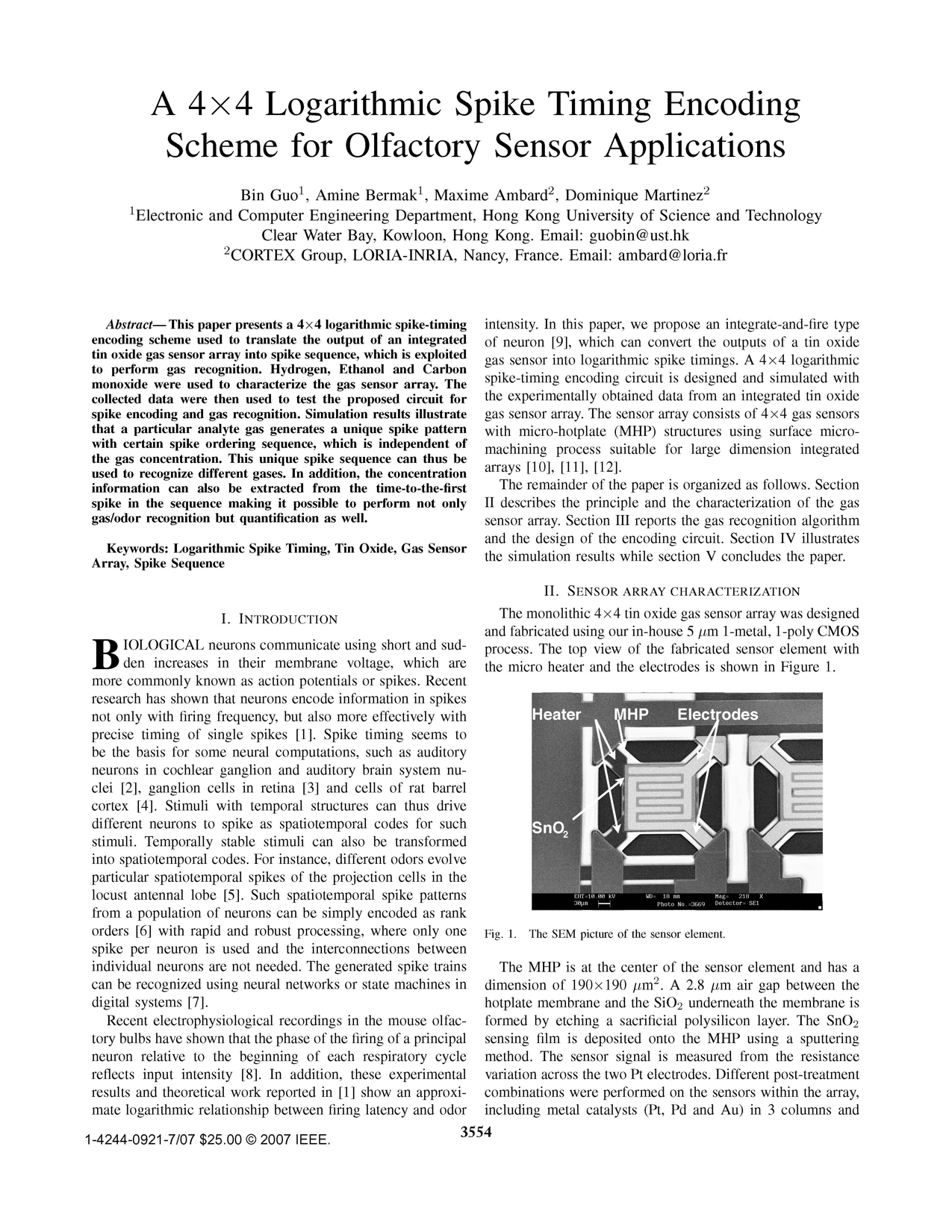This paper presents a 4×4 logarithmic spike-timing encoding scheme used to translate the output of an integrated tin oxide gas sensor array into spike sequence, which is exploited to perform gas recognition. Hydrogen, Ethanol and Carbon monoxide were used to characterize the gas sensor array. The collected data were then used to test the proposed circuit for spike encoding and gas recognition. Simulation results illustrate that a particular analyte gas generates a unique spike pattern with certain spike ordering sequence, which is independent of the gas concentration. This unique spike sequence can thus be used to recognize different gases. In addition, the concentration information can also be extracted from the time-to-the-first spike in the sequence making it possible to perform not only gas/odor recognition but quantification as well.
A 4×4 logarithmic spike timing encoding scheme for olfactory sensor applications
